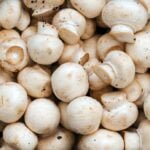Can lions mane grow on straw alone or does it need a different substrate
Title: Can Lion’s Mane Mushrooms Grow on Straw Alone or Do They Need a Different Substrate?
Introduction (150 words)
Lion’s Mane mushrooms, scientifically known as Hericium erinaceus, have become highly sought after for both culinary and medicinal purposes. Due to their distinctive appearance and potential health benefits, these mushrooms have captured the interest of mushroom enthusiasts and researchers. A frequently asked question is whether Lion’s Mane mushrooms can grow solely on straw or if they require a different substrate. In this article, we will delve into this topic and provide comprehensive insights.
1. Understanding Lion’s Mane Mushrooms (250 words)
Before addressing the main question, it is essential to have a foundational understanding of Lion’s Mane mushrooms. Native to North America, Europe, and Asia, these mushrooms stand out due to their cascading spines that resemble a lion’s mane. In addition to their visual appeal, Lion’s Mane mushrooms offer numerous potential health benefits, including brain health promotion, digestive system support, and immune function enhancement.
2. The Relationship Between Lion’s Mane Mushrooms and Straw (400 words)
Straw is a popular and cost-effective choice as a substrate for growing various types of mushrooms due to its ability to hold moisture and nutrients. In the case of Lion’s Mane mushrooms, the choice of substrate depends on factors such as availability, cultivation simplicity, and desired yield. Fortunately, based on available information, Lion’s Mane mushrooms can indeed grow successfully on straw alone as a substrate.
Although straw is not naturally found in the habitat of Lion’s Mane mushrooms, it provides an ideal environment for cultivation due to its nutrient content and moisture retention capabilities. The structure of straw, primarily composed of cellulose and lignin, serves as a suitable food source for Lion’s Mane mushrooms.
3. Cultivating Lion’s Mane Mushrooms on Straw (550 words)
To successfully cultivate Lion’s Mane mushrooms using straw alone, specific techniques must be employed. The following step-by-step guide will assist you in cultivating Lion’s Mane mushrooms with straw:
a) Preparation:
– Choose high-quality, organic straw that is free from chemicals or pesticides.
– Sterilize the straw through boiling or pasteurization to eliminate potential contaminants.
b) Inoculation:
– Acquire Lion’s Mane mushroom spawn either by purchasing it or creating your own.
– Loosen the straw and evenly mix it with the spawn.
– Fill the mixture into grow bags or containers, leaving space for mycelium expansion.
c) Incubation:
– Place the bags or containers in a warm, dark environment, ideally at temperatures between 70-75°F (21-24°C).
– Allow the mycelium to colonize the straw substrate within 2-4 weeks.
d) Fruiting:
– Introduce fresh air and maintain a humidity level of approximately 90% to initiate fruiting.
– Lower the temperature to around 55-65°F (13-18°C) to encourage Lion’s Mane mushroom formation.
– Ensure optimal moisture levels by misting the straw and using humidity trays.
4. Alternative Substrates (250 words)
Although straw alone can successfully support the growth of Lion’s Mane mushrooms, it is noteworthy that other substrates can also yield favorable results. Materials such as hardwood sawdust, wood chips, and agricultural byproducts like corn cobs and wheat bran can all be used for Lion’s Mane cultivation. Experimenting with various combinations of these substrates can enhance nutrient availability and overall yield.
Conclusion (200 words)
The available information suggests that Lion’s Mane mushrooms are adaptable and can thrive using straw alone as a substrate. This adaptability makes their cultivation more accessible to a wider range of enthusiasts. By following the recommended steps and techniques, mushroom hobbyists and farmers can capitalize on the nutrient-rich properties of straw, resulting in the production of high-quality Lion’s Mane mushrooms.
Whether opting for straw or exploring alternative substrates, the key lies in providing the ideal conditions for mycelium to flourish, ultimately giving rise to abundant yields of Lion’s Mane mushrooms. Growers can now enjoy the process of cultivating these remarkable mushrooms in the comfort of their own homes while reaping the numerous potential health benefits they offer.




